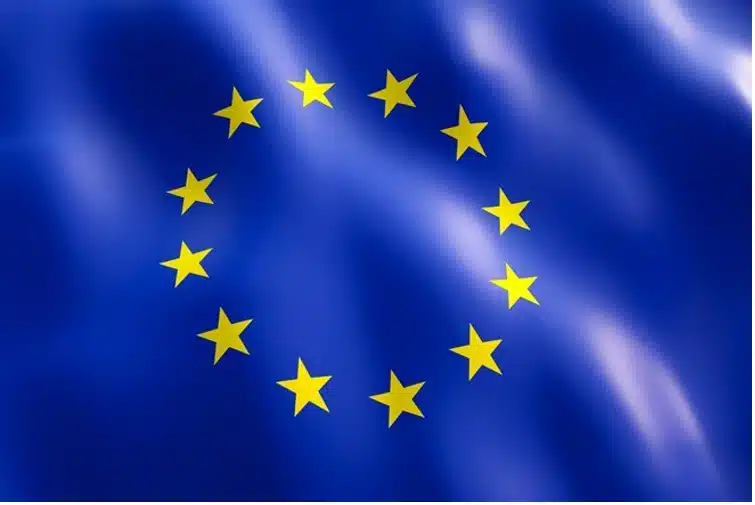'Explaining Court Cases and Precedents Where Trade Secrets and Unfair Competition Were Not Recognized'

As we explained in another article on our site, not all information held by a company is considered a trade secret. Only those that meet the three requirements of secrecy, utility, and non-publicity are classified as trade secrets. Furthermore, to be subject to injunctions or criminal measures, they must fully satisfy the requirements stipulated by law as “unfair competition” or “Japanese Trade Secret Infringement Crime”.
In lawsuits over trade secrets, there are many cases where the company’s claims are not accepted. Let’s take a look at the cases where the information was not recognized as a trade secret or was not considered unfair competition.
https://monolith.law/corporate/trade-secrets-unfair-competition-prevention-act[ja]
When Confidentiality Management Was Not Recognized

There have been cases where a former employee, who moved to another company, was sued by the previous company for using the previous company’s customer information for sales activities at the new company. This is a typical pattern where “trade secrets” are disputed.
The plaintiff company, which is engaged in the planning, development, and sales of food products, claimed that the defendant violated the agreement on confidentiality with the plaintiff, disclosed confidential information such as the plaintiff’s customer and gross profit management table, specification documents, process charts, and cost calculation sheets to the defendant company while still employed, and used them for business activities after moving to the defendant company. Based on the liability for breach of contract or tort, the plaintiff demanded joint and several payment of damages from the defendants.
The court first examined the validity of the confidentiality pledge signed by the defendant during his employment, and stated that if the content is reasonable, does not excessively restrict the actions of the employee after retirement, and the confidential matter is recognized as a trade secret as long as it meets the three requirements, it is valid.
Then, regarding the confidentiality management, the court pointed out that:
- The specification documents were stored on a server accessible from each computer of the plaintiff’s officers and employees, and the plaintiff’s employees could view, print, and duplicate them.
- There was no objective evidence that the customer and gross profit management table, which was stored in the plaintiff’s representative’s computer, was stored in a way that other employees could not access.
- It was recognized that the customer and gross profit management table was distributed without a “no carry-out” label during regular meetings and other discussions.
And stated,
It cannot be said that the confidential information in this case, namely the customer and gross profit management table, specification documents, process charts, and cost calculation sheets, were managed in a way that their employees could clearly recognize as confidential.
Tokyo District Court judgment on October 25, 2017 (2017)
The court ruled that it did not constitute a trade secret and dismissed the plaintiff’s claim. In the judgment, it was stated that “the fact that the company had requested a written pledge of confidentiality from all employees does not affect the above recognition that the confidential information in this case was not managed as confidential.” It is necessary to take confidentiality management measures in a way that is clearly understood by employees. By doing so, it will be easier to submit as evidence and prove in court if a lawsuit occurs later.
The Ministry of Economy, Trade and Industry’s “Guidelines for Management of Trade Secrets” lists specific desirable methods for managing trade secrets. However, the guidelines show data that about 70% of the time, when customer information was taken out and its “confidentiality management” was disputed, it was not recognized as being confidentially managed.
When Usefulness Was Not Recognized

A Taiwanese corporation, the plaintiff, commissioned the manufacture of small USB flash drives and imported and sold them. The defendant, who was also involved in the import and sale of these small USB flash drives, was accused by the plaintiff of imitating the form of the products they manufactured. The plaintiff claimed that the defendant’s import and sale of these small USB flash drives constituted an act of unfair competition under Article 2, Paragraph 1, Item 3 of the Japanese Unfair Competition Prevention Act, and demanded payment for damages.
The defendant had approached the plaintiff about the possibility of manufacturing the small USB flash drives. Discussions were held via email and other means regarding the standard dimensions, corresponding body dimensions, and the installation of LEDs. However, the discussions were eventually terminated, and the defendant commissioned the manufacture to another company and imported and sold the product. The plaintiff argued that the small USB flash drive was manufactured using the plaintiff’s trade secrets (various technical information related to the small USB flash drive) unlawfully used by the defendant.
The court, regarding usefulness, noted that the plaintiff claimed that the information about whether to install LEDs, the position of installation, the direction of light, and the implementation were trade secrets. However,
“The decision to install LEDs, their placement, and the direction of light were all chosen by the plaintiff to meet the options and conditions proposed by the defendant. The content of the information provided by the plaintiff to the defendant is recognized as merely a design matter that would be considered within the scope of ordinary creative efforts by those in the industry. The same applies to the information about the implementation of LEDs. Therefore, none of this information can be recognized as having usefulness, and it cannot be recognized as a trade secret held by the plaintiff.”
Tokyo District Court, March 2, 2011 (2011)
Furthermore, regarding the plaintiff’s separate claim that “even if individual information was known, the combination was not known, and it has usefulness as a product that has been miniaturized to a practical level by organically integrating,” the court stated,
“In this case, the dimensions of the small USB flash drive were determined by the defendant. How to combine known technologies and arrange each part according to these dimensions is a design matter that can be appropriately selected and decided within the scope of ordinary efforts by those in the industry. It cannot be recognized that the combination produces an unexpected and exceptional effect. Therefore, even if these pieces of information are considered as a whole, they cannot be recognized as having usefulness, and they cannot be recognized as a trade secret.”
ibid
The court made this judgment.
If it is merely a matter of “design considerations within the scope of ordinary creative efforts” or “how to combine known technologies and arrange each part,” usefulness will not be recognized.
When Non-Public Nature Was Not Recognized
There was a case where a plaintiff, a corporation engaged in the manufacture and sale of tinware, whose products have been designated as traditional crafts, demanded the defendants, former employees, to cease and desist from manufacturing alloy products and to pay damages.
The defendants A and B, who worked for the plaintiff company, were both young and engaged in the production of tinware, winning awards and the like. However, they were unable to obtain the consent of the plaintiff’s representative when they tried to exhibit their works as individuals at an event. This led to the defendants setting up an independent workshop and starting their activities. The plaintiffs, who manufacture tinware, filed a lawsuit against the defendants, alleging that they were manufacturing and selling tin products using the business secrets related to the alloy used in the manufacture of tinware for the purpose of obtaining unjust profits.
Regarding the alloy in question, the plaintiff argued that “it is clear that the same alloy is being used when comparing the reflection electron images and SEM images of the plaintiff’s products with those of the defendant’s products, including the structure shape and grain boundary precipitation state,” and that the defendants are using the business secrets shown to them by the plaintiffs for the purpose of obtaining unjust profits, and that the defendants’ actions fall under Article 2, Paragraph 1, Item 7 of the Unfair Competition Prevention Act. However, the court stated,
“‘Not being publicly known’ (Unfair Competition Prevention Act, Article 2, Paragraph 6) is understood to mean that it is not generally available outside the control of the holder. If the components and composition ratio of the alloy in question can be easily analyzed from the plaintiff’s products circulating in the market, the alloy cannot be said to be ‘not publicly known’.”
Osaka District Court, July 21, 2016 (2016)
Based on this, the court considered the method and cost of analyzing the components and composition ratio of the alloy in question, and concluded that since the components and composition ratio can be easily confirmed by inexpensive qualitative analysis circulating in the market, it is something that a third party can easily know, and lacks non-public nature, and therefore does not fall under the category of trade secrets.
According to the plaintiffs, they conducted experiments on 622 types of alloys over a period of more than 4 years and spent more than 60 million yen to obtain the composition ratio. However, non-public nature refers to the state where the trade secret is not generally known or cannot be easily known, so if the results can be obtained by inexpensive analysis circulating in the market, it does not fall under this category.
In addition, in this case, the court did not recognize the usefulness of the alloy in question, stating that “sufficient evidence to recognize its technical usefulness has not been submitted.”
When Unfair Competition Was Not Applicable

There was a case where the appellant (plaintiff in the first instance), who was running a care service business, sued three defendants (defendants in the first instance) who had left his company and started a new care service company.
The appellant claimed that the defendants took out user information, which was a trade secret, and used it to solicit the appellant’s users for the purpose of gaining unfair profits or causing damage to the appellant after leaving the company, and switched them to contracts with the defendant’s company. The appellant argued that these actions constituted unfair competition (Article 2, Paragraph 1, Item 7 of the Unfair Competition Prevention Act, Japanese Unfair Competition Prevention Act) and sought an injunction against the three defendants from concluding contracts related to care services for the users in the user information and soliciting them to conclude contracts, as well as damages. However, the claim was dismissed in the original trial, so the appellant appealed.
The court judged whether the user list, which contained information such as the names, ages, phone numbers, and care certification statuses of the care service users (user information), constituted a trade secret. As a result, the court acknowledged that the user information was managed as a trade secret, considering that:
- It was stored in a lockable cabinet as a single paper file.
- When no one was in the plaintiff’s office, the cabinet was supposed to be locked, and the key was placed behind the cabinet.
- The user information was saved in the cloud computing system “Raku-net” as an electromagnetic record, and a security key was distributed to each of the four employees, including the three defendants, with an ID and password set on the security key.
- The defendants’ employment contracts stipulated that they must keep secret any information about users or their families that they learned in the course of their work.
However, since one of the defendants took the security key, which allowed access to the user information, home during his paid leave and accessed it about twice, and also came to the plaintiff’s office about twice during his leave, the court ruled that it was not possible to recognize that the user information was illegally obtained, considering the possibility that the care manager needed to create unprocessed documents as necessary.
Furthermore, the court stated:
The three defendants were not prohibited from soliciting the appellant’s users (there is no provision in the appellant’s employment rules or the employment contracts between the appellant and the three defendants that stipulates a non-competition obligation after resignation). It is not illegal for Defendant A to tell two of the appellant’s users that he is leaving the appellant’s office and starting a care business at the defendant’s company, as it is a reasonable farewell to the users.
Osaka High Court, July 20, 2017 (2017)
Even if the appellant’s users switched their contracts to the defendant’s company in a short period of time, there was nothing unnatural about it, and it was not possible to recognize that the user information was used illegally based on these circumstances. The court dismissed the appeal, ruling that the actions of the three defendants did not constitute unfair competition under Article 2, Paragraph 1, Item 7 of the Act.
Unfair Competition Prevention Act (Japanese Unfair Competition Prevention Act)
Article 2 In this Act, “unfair competition” refers to the following:
Paragraph 1, Item 7 An act of using or disclosing a trade secret for the purpose of gaining unfair profits or causing damage to the trade secret holder, in the case where the trade secret is shown by the trade secret holder.
This is a case where the trade secret nature was affirmed, but neither illegal acquisition nor illegal use could be recognized. It is a case where it is not unnatural to have access to secret information for work purposes, but the fact that it was a case with a care manager, who has a deep personal connection with the users, may have influenced the conclusion.
Summary
It appears that very few companies fully meet the criteria outlined in the Ministry of Economy, Trade and Industry’s “Guidelines for Trade Secret Management,” with the majority falling short. It is crucial for companies to promptly assess their own systems. As can be seen from the examples given here, many cases involve former employees. Rather than hastily devising a response after a problem has arisen, it is necessary to establish a robust trade secret management system in advance, and to prepare for unforeseen circumstances by providing accurate evidence to the court when initiating a lawsuit, so that the court can understand your position.
Category: General Corporate
Tag: General CorporateIPO





















